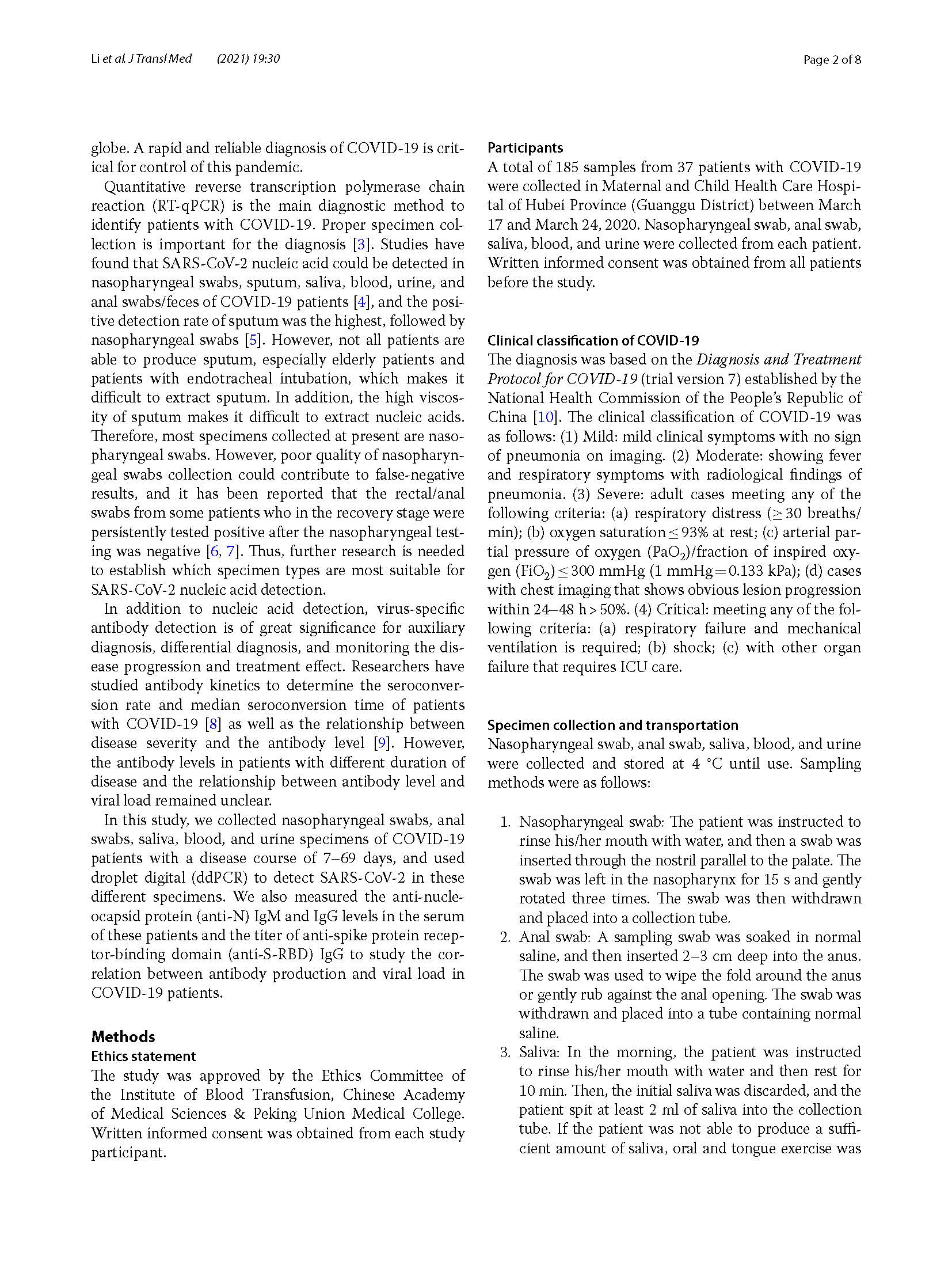Analysis of viral load in different specimen types and serum antibody levels of COVID-19 patients
release date:2020-04-22

Abstract
Background: COVID-19 has caused a global pandemic and the death toll is increasing. However, there is no defini-tive information regarding the type of clinical specimens that is the best for SARS-CoV-2 detection, the antibody levels in patients with different duration of disease, and the relationship between antibody level and viral load.
Methods: Nasopharyngeal swabs, anal swabs, saliva, blood, and urine specimens were collected from patients with a course of disease ranging from 7 to 69 days. Viral load in different specimen types was measured using droplet digital PCR (ddPCR). Meanwhile, anti-nucleocapsid protein (anti-N) IgM and IgG antibodies and anti-spike protein receptor-binding domain (anti-S-RBD) IgG antibody in all serum samples were tested using ELISA.
Results: The positive detection rate in nasopharyngeal swab was the highest (54.05%), followed by anal swab
(24.32%), and the positive detection rate in saliva, blood, and urine was 16.22%, 10.81%, and 5.41%, respectively. How-ever, some patients with negative nasopharyngeal swabs had other specimens tested positive. There was no signifi-cant correlation between antibody level and days after symptoms onset or viral load.
Conclusions: Other specimens could be positive in patients with negative nasopharyngeal swabs, suggesting that for patients in the recovery period, specimens other than nasopharyngeal swabs should also be tested to avoid false negative results, and anal swabs are recommended. The antibody level had no correlation with days after symptoms onset or the viral load of nasopharyngeal swabs, suggesting that the antibody level may also be affected by other factors.
Keywords: COVID-19, Viral load, Droplet digital PCR, Nasopharyngeal swab
See all: https://doi.org/10.1186/s12967-020-02693-2
 Abstract
Abstract